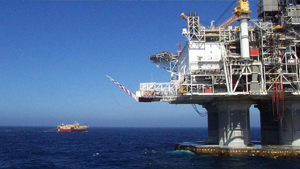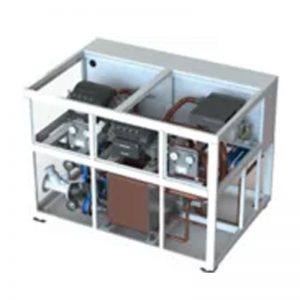Absorption Chiller
The absorption chiller uses hot (waste) cooling water from the diesel engines – normally disposed of over board – to produce chilled water serving the HVAC installation. As absorption chillers use heat to drive the refrigeration cycle, they only consume a small amount of electricity to run the pumps on the unit. Absorption cooling can result in energy savings of up to 95%. Absorption chillers generally use steam or hot water to drive the lithium bromide refrigeration cycle but can also use other heat sources.
How it works
An absorption cooling cycle relies on three basic principles:
- When a liquid is heated it boils (vaporizes) and when a gas is cooled it condenses.
- Lowering the pressure above a liquid reduces its boiling point.
- Heat flows from warmer to cooler surfaces.
Absorption cooling relies on a thermochemical ‘compressor’. Two different fluids are used: a refrigerant and an absorbent. The fluids have high ‘affinity’ for each other, which means one dissolves easily in the other. The refrigerant – usually water – can change phase easily between liquid and vapor and circulates through the system. Heat from a hot water boiler, steam or a waste heat source drives the process. The high affinity
of the refrigerant for the absorbent (lithium bromide) causes the refrigerant to boil at a lower temperature and pressure than it normally would and transfers heat from one place to another.
Suitable for marine application
A dedicated absorption chiller for marine use has been designed taking into consideration and resolving negative aspects, such as the refrigerant’s overflow and mixing caused by ship motions, special welding, structure strength and performance de-rating in view of the ship pitching and rolling. After careful design and research the absorption chillers were tested on a moving bed to simulate the marine conditions. Our maritime absorption chillers can be steam or hot water fired and seawater cooled with Cu/Ni or Ti absorber and condenser heat exchangers. This solution can be used to replace a conventional electric chiller (heat source must be 100% of the time available) or in a hybrid version (Electric chiller as back up).

















There are no reviews yet.